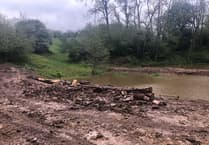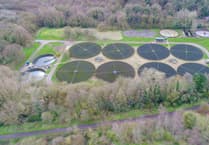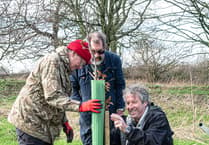Avon Needs Trees hopes to combat climate change by planting 100,000 trees in the village of Compton Dando, but it needs your help!
The charity, formed in 2019 to tackle the climate and nature crisis, needs residents support to breathe life into the project, Lower Chew Forest, in the aim of planting 420 acres worth of trees.
With plans to build the ‘South West’s biggest woodland creation project’, Avon Needs Trees CEO, Dave Wood, said: “It really is the biggest opportunity in a generation for us to turn around the critically low percentage of woodland cover in our region, and create a forest-sized woodland.”
Avon Needs Trees are close to getting the green light, but urgently need the community’s help to turn the dream into reality.
When put together with adjoining woodland, the proposed new Lower Chew Forest would be bigger than Leigh Woods or the Downs (Clifton and Durdham) in Bristol, and twelve times the size of Royal Victoria Park in Bath.
Lower Chew Forest would see 420 acres of land planted with 100,000 native trees, but the charity that is behind the scheme says donations will make a huge difference at this critical stage.
Since 2019, the charity has planted over 35,000 native trees in the Somerset and Wiltshire countryside.
In 2023 the charity teamed up with the Forest of Avon Trust to plant Great Avon Wood, a new woodland of around 40,000 trees in Pensford, with over 30 different species of native trees, with the help of over 1,000 local volunteers.
Dave continued, “When Wick Farm came onto the market we knew we had to act. It’s rare for such a large amount of land to come up in one go, particularly somewhere like Compton Dando which is so close to Bristol and Bath, and we know that biodiversity recovery is far more effective across a large area.
“We have just 7.8% woodland cover in the West of England, compared to 13.2% average across the whole of the UK.
“The benefits of increasing this cover include helping to mitigate climate change, improving biodiversity connectivity and offering a place for people to volunteer, learn and connect with nature.”
The charity has identified grant funds and impact focused loans to cover a portion of the cost of the land and woodland creation costs. Continued on page 24...




